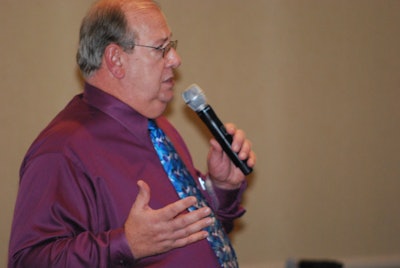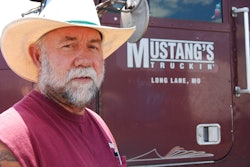
Wilson himself was at the Motor Carrier Safety Advisory and Medical Review Board joint sleep apnea subcommittee meeting in Washington last week, where he reports committee members worked at drafting language for potential official medical guidance on the sleep apnea condition. The upshot of the subcomittee’s conclusions? “It’s not looking positive for the industry,” Wilson says. “The BMI [screening] standard is likely to be between 31 and 35. The last number I really heard talk of was 31. That was probably going to be the guideline. They tended to lean toward 33 for a while – and a size 17 neck.”
As committee members debated standards, Wilson says, the general consensus was that a sleep apnea diagnosis would be a “disqualifiable diagnosis with a stand-down,” meaning a driver diagnosed with the condition would be required to undergo treatment to be reinstated. The next meeting of the full MCSAC committee Feb. 6-9 will see further action on the issue, Wilson notes. Watch for details about it to emerge at MCSAC’s website.
More broadly, Wilson’s thinking on where the industry is today is reflected in the analysis that follows, a sort of state-of-the-industry that began as a response to another post put up for discussion on the LinkedIn business networking site. I thought I’d throw it out there for you, as it contains clear indications as to why he thinks the sleep apnea debate will be a net negative for the business of trucking. He gets into what he sees developing in the realms of safety and opportunity, given the current unsettled regulatory environment and perhaps equally unsettled economy. My question for you: Is he correct? Are we in fact headed down a path that leads ultimately to no improvement in “conditions, pay, rewards, trust and attitudes toward drivers”? His full commentary follows.
I think that the major players in our industry are taking a “sit back and see” attitude to future regulations, including estimates of how they will affect their bottom lines. With hours of service changes, potential EOBR mandates, driver medical qualifications changes and the institution of the National Registry of Certified Medical Examiners (among which I think some are good and some unnecessary), how will the bottom line be affected?
Example: The new restart provision ultimately means fewer available hours of work time, more equipment, and more support personnel and, ultimately, more drivers will be needed to deal with the same logistical tonnage. The two 1 a.m. to 5 a.m. provisions will create more heavy truck traffic during the already cluttered rush hour traffic jam, placing more trucks in the currently overburdened infrastructure, and cause increased crash rates by just adding additional trucks to the highways. Take into consideration that I did not mention any more revenue generated, just more trucks and drivers to haul the same amount of product. Some smaller carriers and owner-operators will feel the pressures, and try to adapt, but I can see a culture developing of violators just trying to survive.
Point 1: This is not a safe culture, either.









